After the El Bulli effect: Spanish cuisine in Singapore is better than ever
Advertisement
Experiences
After the El Bulli consequence: Spanish cuisine in Singapore is better than e'er
From Catalonian to Basque cuisine, a new breed of chefs are serving delectable experiences similar never before.
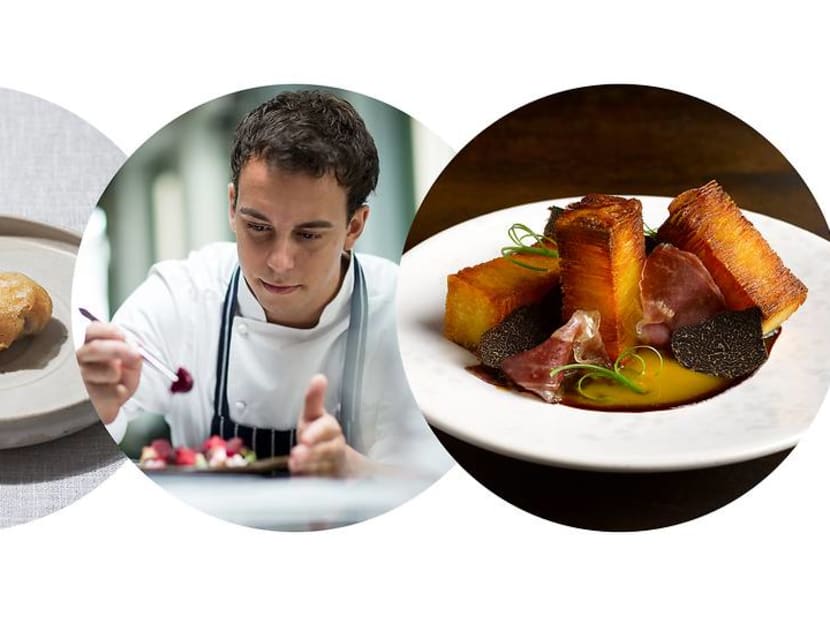
(Photos: Esquina and Basque Kitchen)
04 Sep 2022 06:30AM (Updated: x Jul 2022 05:13PM)
Just 10 years ago, it would have been difficult to name a bully Spanish restaurant in Singapore. Sure, there were a scattering serving middling paella and garlic prawns, but none could merits a space on the list of must-swallow places.
How things take changed. Today, fifty-fifty if their number is small-scale compared to their Italian and French counterparts, Spanish restaurants have made their presence felt hither, with a handful firmly entrenched in our finicky dining scene.
THE EL BULLI Event
The man to give thanks for the rise of Spanish cuisine – not only in Singapore, but effectually the world – is chef Ferran Adria. His legendary El Bulli was named the World's Best Restaurant a tape 5 times between 2002 and 2009, and ushered in the era of modernist cooking techniques similar spherification and foams.

Adria is the reason why in the early noughties, men began taking an interest in cooking and claiming precious kitchen countertop space for bulky sous vide machines.
What Adria as well did at El Bulli was update and redefine Catalonian food. And so much and so that people effectually the world wanted to eat his foamy version of the Spanish tortilla more than they ever wanted the traditional thick omelette layered with sliced potatoes.
READ > You'll desire to savour every terminal sip of this tea, which costs S$800 a pot
Many of today'due south best-known chefs including Rene Redzepi, Jose Andres and Heston Blumenthal cut some teeth in El Bulli, which airtight in 2011. And when they left, some went on to open their own versions of modern Catalonian restaurants around the world.
CULINARY CONQUISTADORS
One of them was chef Alain Devahive, who recently opened the popular Oliva Restaurant & Lounge along Amoy Street. Devahive spent a decade at El Bulli and its food inquiry lab El Bullitaller before coming to Singapore in 2022 to open the now defunct Catalunya – which at the time boasted some of the near coveted tables in town.
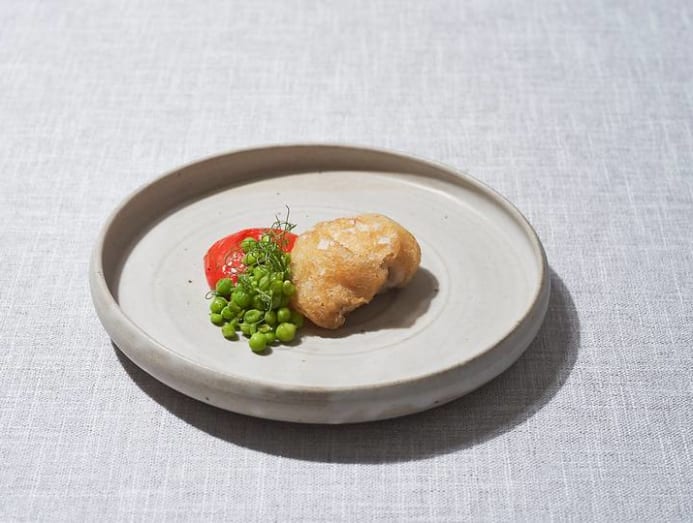
Several months earlier, in December 2011, the Unlisted Collection group, in collaboration with El Bulli alumnus Jason Atherton, opened Esquina. From its industrial-chichi corner of Jiak Chuan Road, then-head chef Andrew Walsh served small-scale plates that were Castilian in spirit merely more modern European in execution and flavor.
Meanwhile, chefs trained past another Catalonian luminary, the late Santi Santamaria – whose eponymous restaurant at Marina Bay Sands shuttered following his expiry in early on 2022 – began establishing their ain restaurants across town.
In 2012, Santi'due south one-time executive chef Daniel Chavez and chef de cuisine Pepe Moncayo opened Ola Cocina Del Mar, where Chavez continues to serve robust family-way Spanish fare. Moncayo left a yr later and co-founded Bam!, which serves an exquisitely unique mix of Spanish food touched with Japanese elegance. Both restaurants remain among the most underrated dining experiences in Singapore.
MODERN Evolution
Current head chef of Esquina, Carlos Montobbio admitted that when he took over the restaurant's helm in 2015, he had to play it prophylactic. "At that fourth dimension, our customers were not so familiar with Spanish nutrient. They mostly knew almost tapas," he recalled. "So because of that, we did more traditional dishes like grilled octopus and Spanish tortillas topped with caviar."
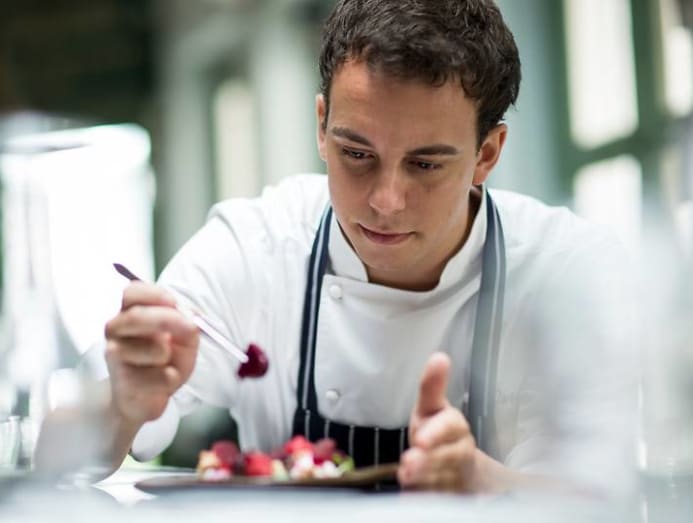
In the years since, Montobbio's nutrient has evolved, influenced by his new adopted habitation. His menu features contemporary options like body of water urchin sandwiches with burrata and blackness truffles, and Bresse pigeon with burnt rosemary polenta and berries escabesche.
"My food is yet Spanish and Catalan, but I've lived in Singapore for 6 years now, so presentation wise, it's more Asian. At present I might chop suckling pig and serve it in individual portions, which I would never do in Spain," he said with a express mirth.
Montobbio notes that as Singaporeans are more than tuned in to Spanish food today, they are keener to explore new flavours. "People have travelled throughout Kingdom of spain and have more references for the food," he added. "They understand that Spanish nutrient is then much more tapas, so they are willing to effort different Spanish cuisines like Basque food, for instance."
BASQUE IN THE Celebrity
As it was with Catalonian cuisine a decade ago, the food of the Basque country is having a chip of a moment in the spotlight now. It helps that Basque establishments like Asador Etxebarri, Mugaritz and Elkano accept risen in the ranks of the World's l Best Restaurants, giving moneyed foodies crusade to venture into Basque country to experience the charms of its produce and cooking.
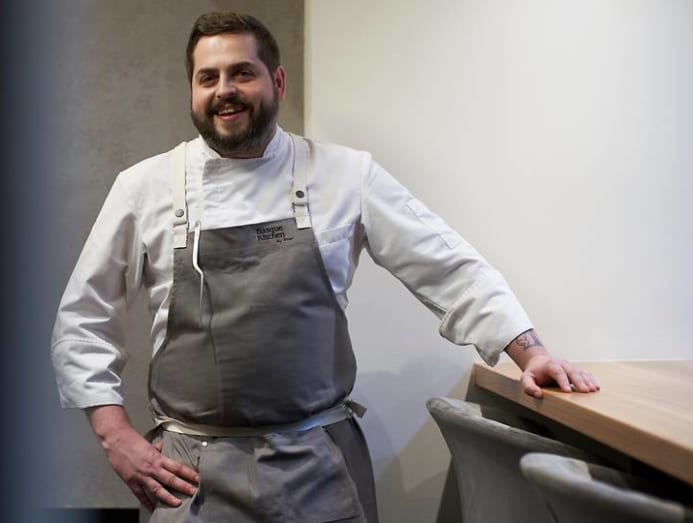
This was i of the reasons why Basque native Aitor Jernonimo Orive decided that the time was right to open his sleek Basque Kitchen along Amoy Street concluding October. "Firstly, the Basque country is in my roots – it'due south where I was trained," said the affable chef whose resume includes a stint at Mugaritz. "Secondly, I figured the list of Basque restaurants pushing through the top ranks of the World'due south l Best Restaurants would requite u.s.a. an edge."
Aitor'due south instincts were right on the money. Basque Kitchen has enjoyed quick popularity, especially among erudite, well-travelled diners.
READ > Stressed? Fatigued? Here are five CBD spas to indulge in some downtime
"Well, at that place are 2 types of diners," he told CNA Luxury. "The first are Singaporeans who travel to food destinations like San Sabastian and have enjoyed the food at that place, so they are familiar with some of our offerings. The other type of diner isn't so enlightened of what Basque cuisine is, but is curious and eager to acquire about it – and we are happy to assistance them go to know it."
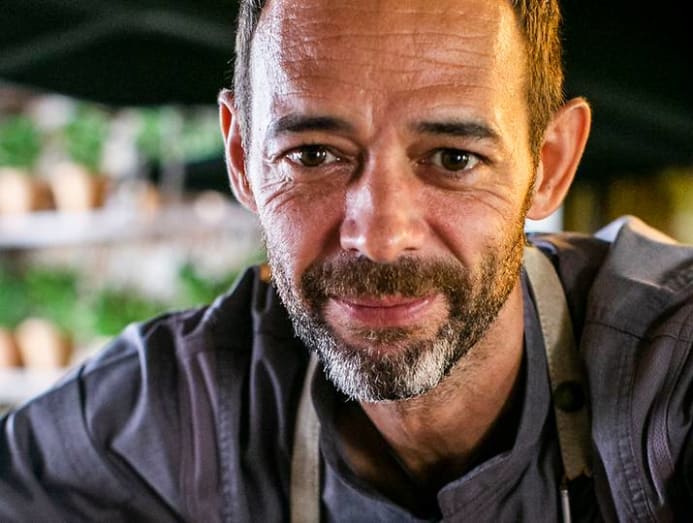
Joseph Ong, managing director of the 1-Grouping, was 1 such intrepid traveller who and then was inspired by his dining experiences in San Sebastian that, upon his return, sought to bring a gustatory modality of it to Singapore by opening two Basque concepts – TXA Pintxo Bar and UNA – in the historical Alkaff Mansion.
"The meals nosotros had [in San Sabastian] were so adept that it made u.s.a. want to larn more," he said. "We discovered how unique Basque Country and its cuisine is. It is officially part of Spain, but its self-identity is very strong, which is reflected in the food and culture."
DELECTABLE DIFFERENCES
Much of Basque cuisine is centred around the produce from the Bay of Biscayne. "In that location'due south a lot of fish and beefiness involved, as well as a stiff grilling and fishing culture," said Aitor.
Catalonian cuisine, explained Montobbio, is more complex and often mixes produce from the sea and mountains. "For example, you lot might have chicken stewed with prawns, or squid-and-pork meatballs cooked in a squid sauce."
Comparing both cuisines is futile, added Aitor, since the regions' geographies and cultures are vastly unlike. "The only common element between Catalan and Basque Country is that they both prevarication within Spain."
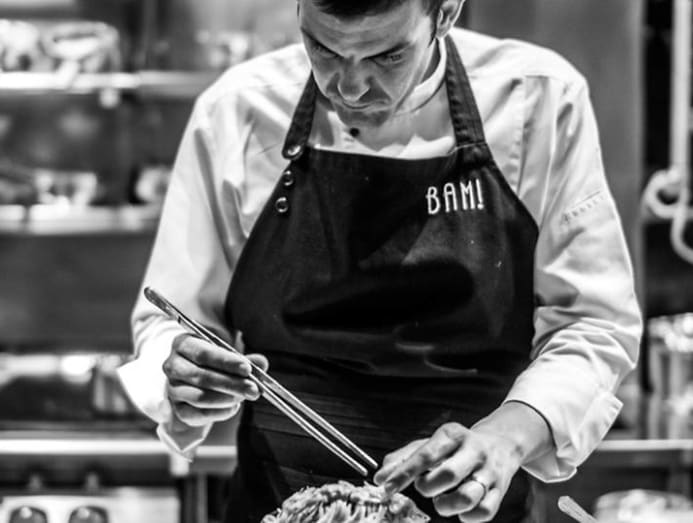
What both regions practice have in common is that, geographically, they are inclined to the influence of neighbouring France. Over the terminal 20 years, Spanish chefs in both regions have embraced a more experimental mental attitude associated with nouvelle cuisine, which has propelled them to atomic number 82 Spanish cuisine's march onto the global table.
Now that the El Bulli issue has abated, however, and the culinary world has establish a happy balance between modernist and traditional techniques, Spanish cuisine's focus is returning back to basics.
"I think moving frontwards, the trend isn't and then much almost which [Spanish] regional cuisine might be the adjacent big thing, but rather that the old-school rustic stuff volition go more than popular," predicted Aitor. "Where before our food was more technique-driven because of El Bulli, now there is more than cooking with charcoal and expert produce… Things that the traditional Basque restaurants in the list of the world's best restaurants are doing."
Every bit the maxim goes, sometimes life takes you full circle just to show you how much you have grown.
Source: https://cnalifestyle.channelnewsasia.com/experiences/best-spanish-food-in-singapore-261456
0 Response to "After the El Bulli effect: Spanish cuisine in Singapore is better than ever"
Post a Comment